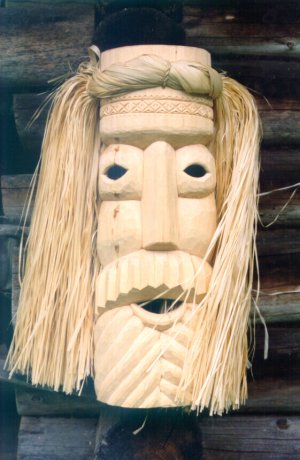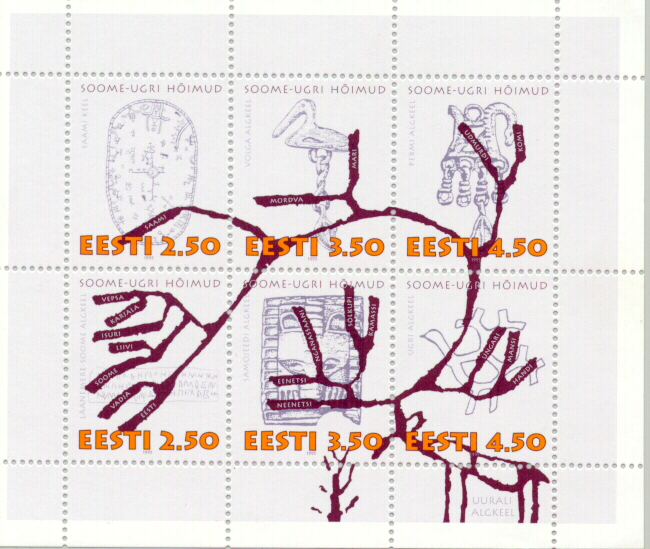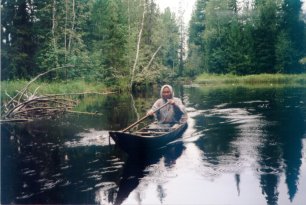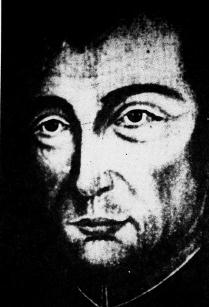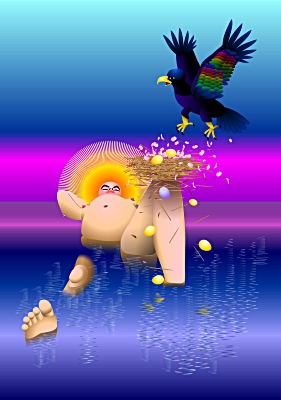Window to the Finno-Ugric world Archives. Newer information: www.fennougria.ee
Erzyan wooden art
Photo by Peeter
Laurits
URALIC PEOPLES - WHO ARE THEY ?
According to the recent information and hypotheses the peoples speaking the Uralic languages have inhabited Europe for about ten millennia. Even before the Great Migration mainly the Uralic languages were spoken in Eastern and Central Europe.
The linguistic kinship of the Finno-Ugric peoples was discovered by János Sajnovics (1733–1785), a Hungarian scholar, at the end of the 18th century. At present the branch of linguistics – Finno-Ugric studies – originating from a few notes taken by Hungarian theologian, has developed into wide-scale Uralic studies, including also the Samoyed languages. Sometimes the concept of Finno-Ugric peoples covers all Uralic peoples, the Samoyeds included.
Despite the analogous construction of the Uralic languages, they are not reciprocally understandable. An Estonian can understand some Finnish, an Udmurt can understand some Komi, but the speakers of more remote languages have to take a special effort for tracing common words in order to find evidence of their kinship. In particular, the kinship of the Uralic languages can be seen in their similar construction, which has also influenced the frame of mind of the Uralic peoples and the way they see the world. Regardless of the existing differences, this facilitates their mutual understanding. At the same time, the boreal attitude of the Uralic peoples enriches the world culture with approaches made possible only while thinking in these languages. Unlike the Indo-Europeans, people thinking in the Uralic languages would not consider the animate or inanimate nature as a material, but rather as a partner. Nor are the cultures of the majority of our kindred peoples aggressive – throughout history they have tried to adjust themselves to ever new neighbours until they had to retreat in order to maintain their own identity. It might be meaningful that the collapse of the former Soviet Union, which provoked several severe ethnic conflicts, has been bloodless on the territories of the Finno-Ugric peoples.
Uralic peoples differ from each other by their race, religion and the type of culture. Western Finno-Ugrians belong to the Caucasian race, but the Khants (Ostyaks) and Mansis (Voguls) in Siberia, the closest relatives of the Hungarians, like the Samoyeds, represent the Uralic race involving both the European and Mongolian characteristics. This allows us to suppose that racism should be strange to a Finno-Ugrian aware of his kin.
Regarding the type of culture, Estonians, Finns and Hungarians are typical Europeans, while the culture of Volga-Finnic, Permian and minor Balto-Finnic peoples is agrarian, since due to several historic, political and cultural reasons they have had no opportunity to create their own urban culture. Throughout the centuries the culture of the Khants, Mansis and Samoyeds, which has based on hunting, fishing and reindeer raising, has adapted itself to the life under extreme Siberian conditions, nevertheless, it is most vulnerable to the European industrial culture.
As to their religion, Estonians, Finns and Western Lapps are Lutheran, whereas Hungarians are mostly Catholic (Calvinists and Lutherans can also be found). Finno-Ugrians living in the European part of Russia are mostly Orthodox, but the Udmurt and Mari people have preserved the ancient nature religion (i.e. animism). The Finno-Ugrians in Siberia as well as the Samoyeds are shamanists.
The Uralic peoples differ in their political fate and status. Hungarians have a thousand-year-long independent state. Finland with its own Parliament and currency was autonomous in the czarist Russia already. Estonians gained their independence only in 1918. After World War II, Estonians and Hungarians were part of the so-called socialist sphere, whereas Finland succeeded in maintaining its market economy and democracy.
Saamis inhabit the territories of four countries and it is only in recent years that they have started to restore their national unity. Western Saamis (in Norway, Sweden and Finland) have been successful in fighting for their rights. Together with Indians and Australian Aborigines they have been the driving force of the movement of the so-called fourth world and have initiated the activities of the World Council of Indigenous Peoples. Pursuant to the Latvian Constitution, Livonians have been recognised as an indigenous nation.
The rest of Uralic peoples live in Russia. Major peoples have their own republics or autonomous regions, where they form a minority (excluding Komi Permyak Autonomous Region). Although the Vepsians have a national commune in Karelia, Ingrian Finns, Izhorians and the Selkups (Ostyak Samoyeds) have no territorial autonomy. The Finno-Ugrians living in Russia have no ethnic secondary schools and it is not everywhere that the primary education is provided in their mother tongue. Recent changes in Russia have facilitated the growth of national self-consciousness and the creation of national organisations. Despite the fact that the "Conception of the development of minority peoples" as well as laws concerning the minority and indigenous peoples have been adopted in Russia, there are still several obstacles, mainly due to the economic situation and the attitudes of the main body of the population, which prevent the people from achieving the high-quality ethnic way of life. So far the Uralic peoples have had little possibilities for enjoying education in their native languages as well as preserving their cultures, though the situation differs in different regions.
In the course of time, the unity of the Uralic peoples has exercised a considerable impact on their cultural emancipation. Finns have been influenced by their relationship with Hungarians and Karelians, whereas Estonians have taken Finns as an example and received help from them. With the help of Finns, Estonians and Hungarians the Livonian ethnic consciousness and literary culture were bought back from the oblivion during the period between two world wars. Awareness of their kinship with Finns, Hungarians and Estonians is nowadays of special importance for support of the self-consciousness of the Finno-Ugrians living in Russia.
The strength of the Uralic peoples lies in their diversity: similar thinking generates better understanding among us, our differences create topics for discussion and enable us to enrich our cultures. The great variety of the Uralic peoples may be considered their strength – since we think in a similar way, it is easy for us to understand one another; since we are different, we have topics to discuss and we can mutually enrich our cultures.
URALIC PEOPLES
SAMOYED
PEOPLES
Nenetses
Enetses (Yenisei Samoyeds)
Nganasans (Tavgi)
Selkups (Ostyak Samoyeds)
Kamass
UGRIAN PEOPLES
Khants (Ostyaks)
Mansis (Voguls)
Hungarians
PERMIAN (FINNIC) PEOPLES
Komis (Zyryans), Permian Komis
Udmurts (Votyaks)
VOLGA (FINNIC) PEOPLES
Maris (Cheremis; Hill,
Meadow and Eastern)
Mokshas (Mordvins)
Erzyas (Mordvins)
SAAMI
PEOPLE
with
7 to 9 languages
(BALTIC-) FINNIC PEOPLES
Livonians
Votians
Ingrians
Vepsians
Karelians
Karelians
Proper
Livvicans (Olonetsians)
Ludes
Finns
Ingrian
Finns
Estonians
Setos
Vőro (Southern
Estonian)-speaking population
Finno-Ugric Peoples
Estonian stamps
Forest Nenets writer
and activist
Juri Vella
Photo By Olli Tammilehto
Ilmatar and Scaup
an illustration to the
Baltic-Finnic creation myth from Kalevala
Mari ethnic religion
prayer
Photo by Alexsey
Alekseyev
